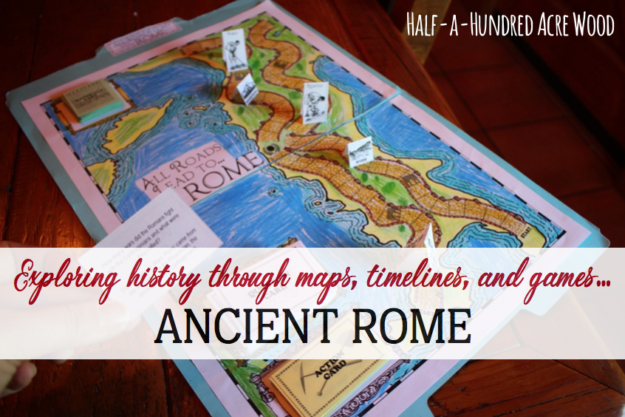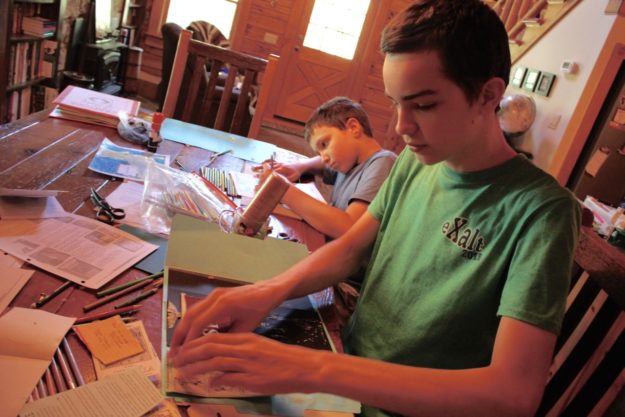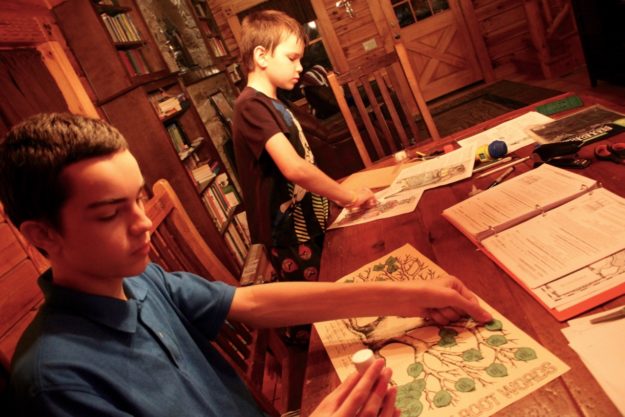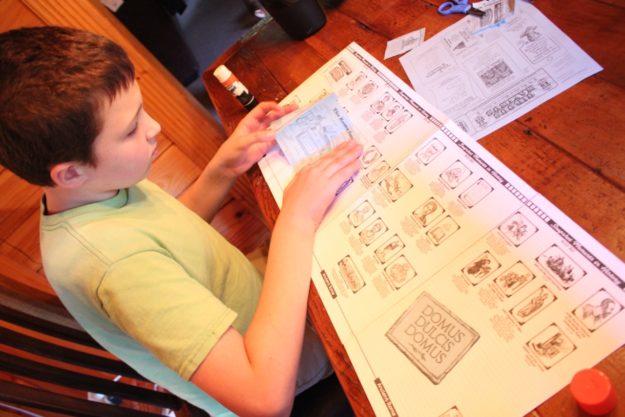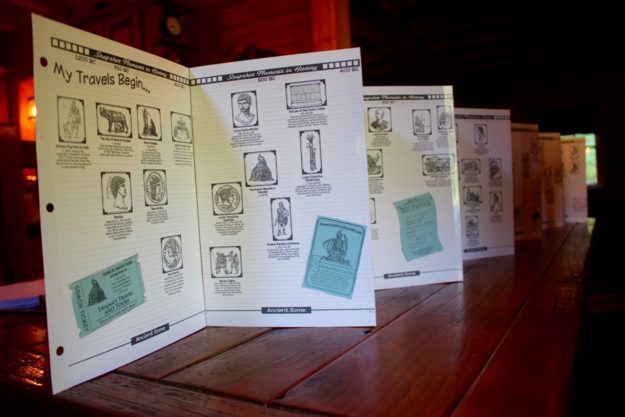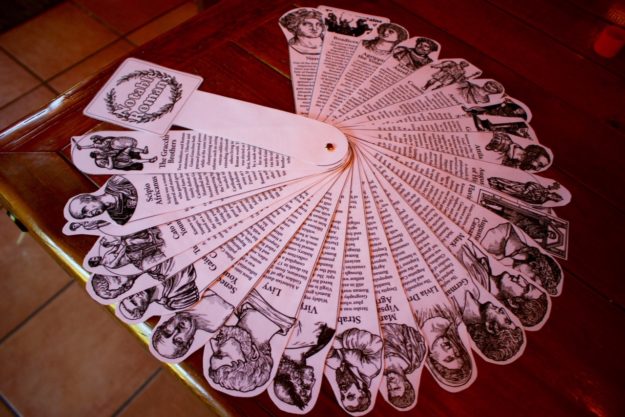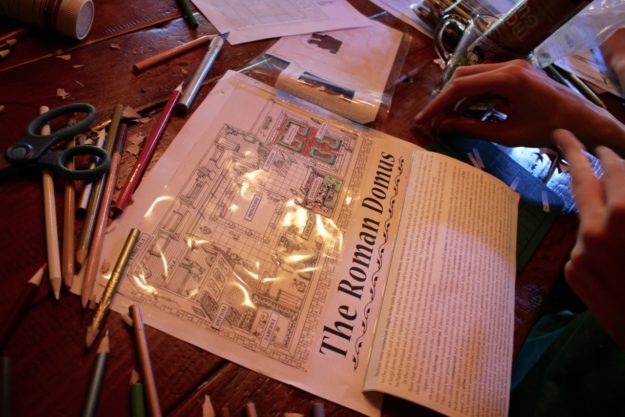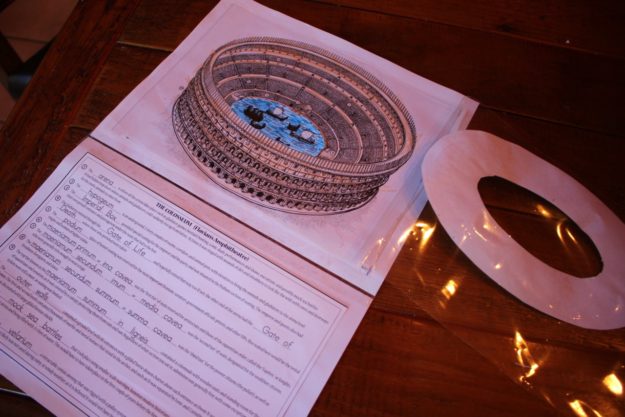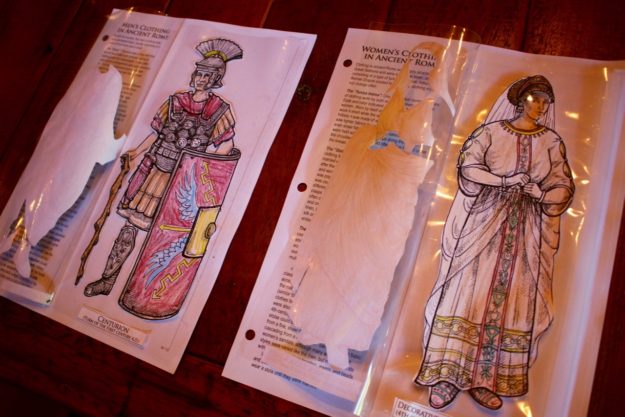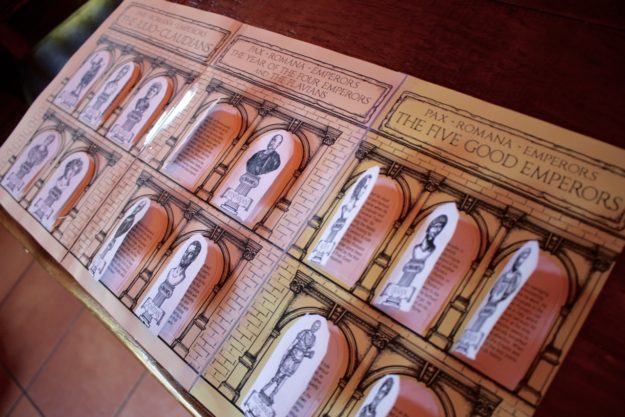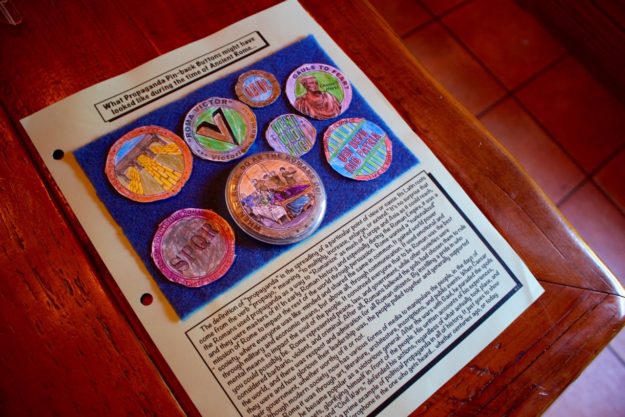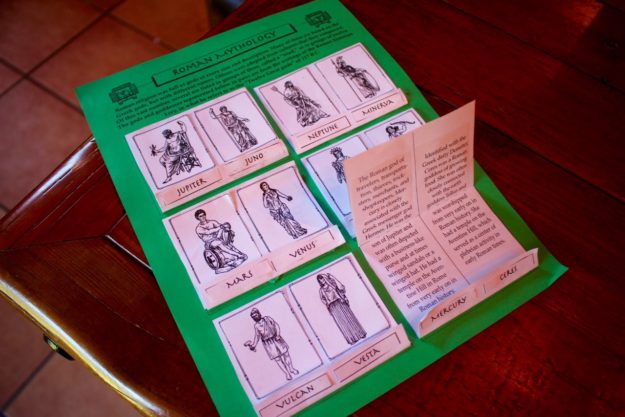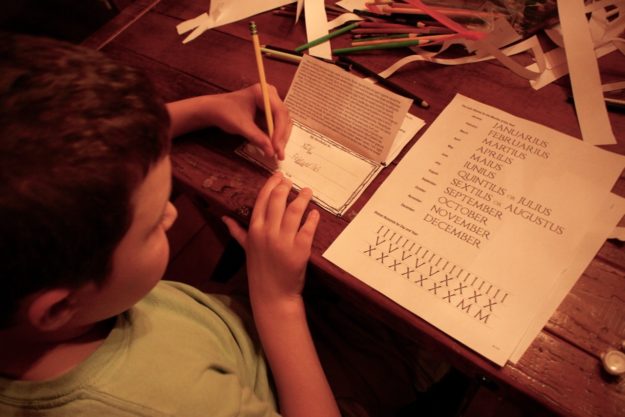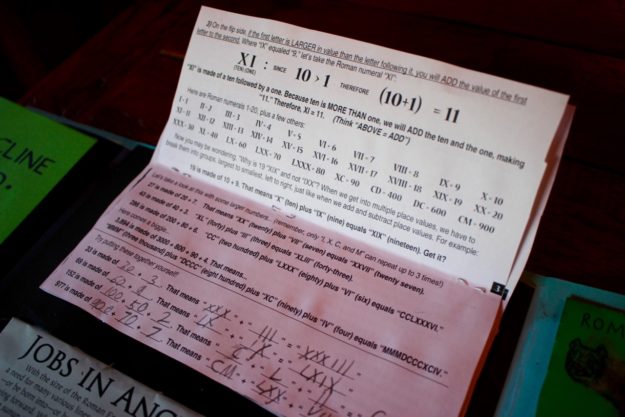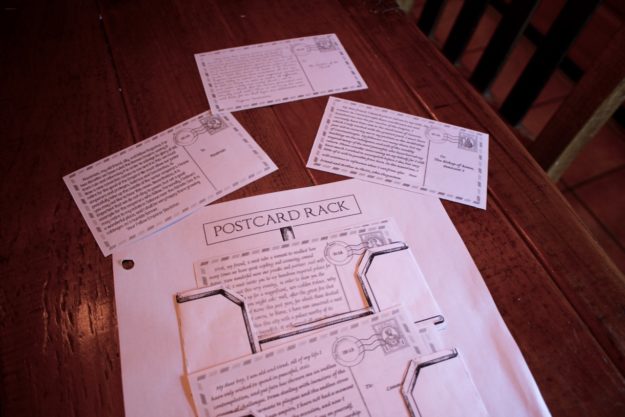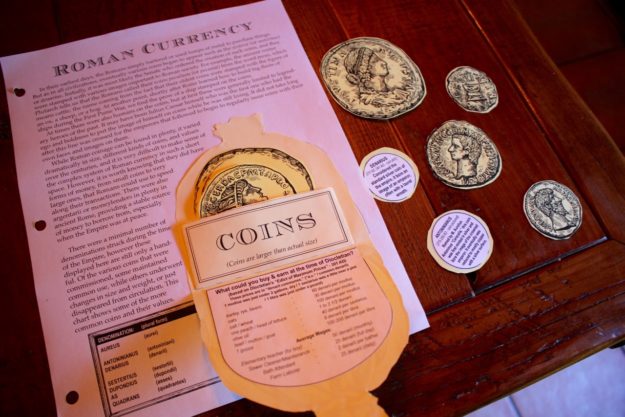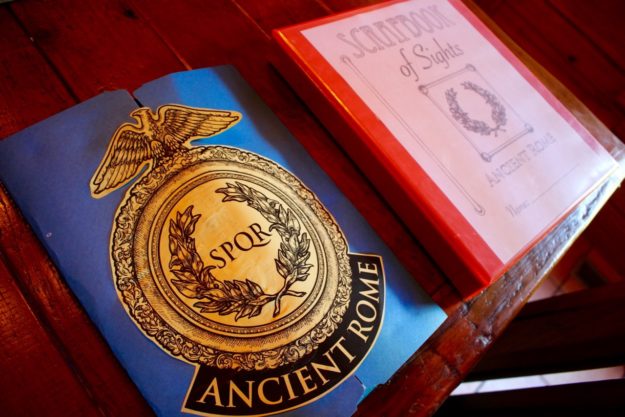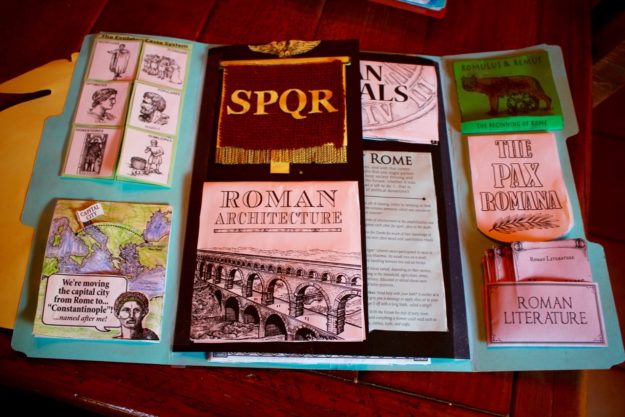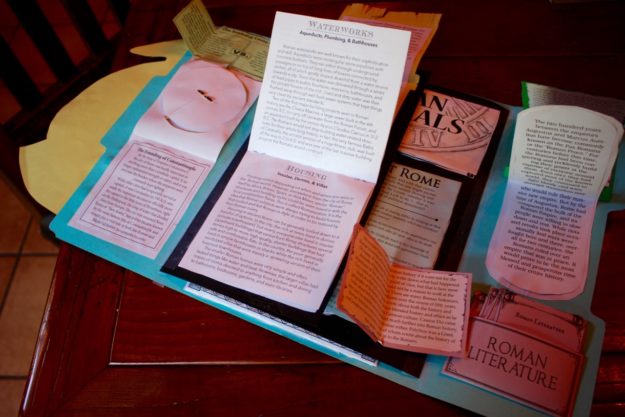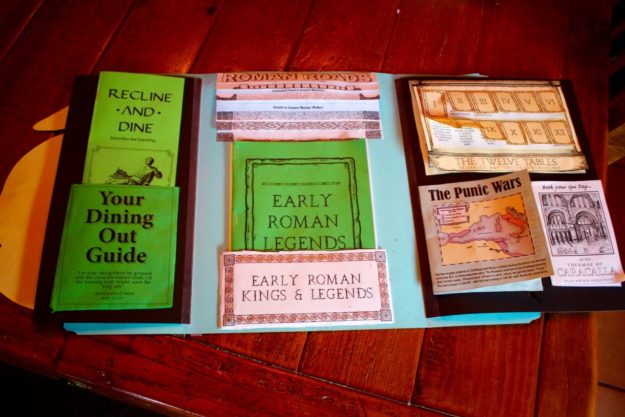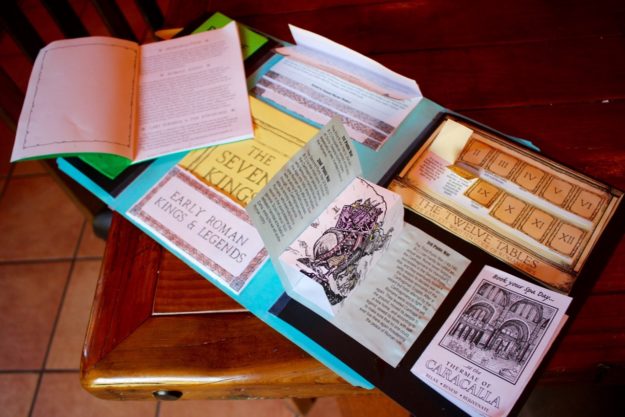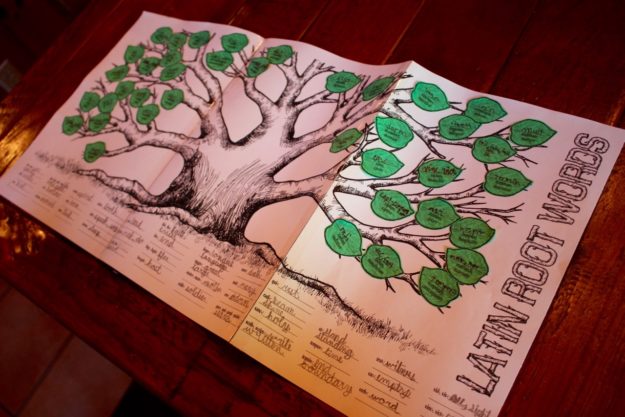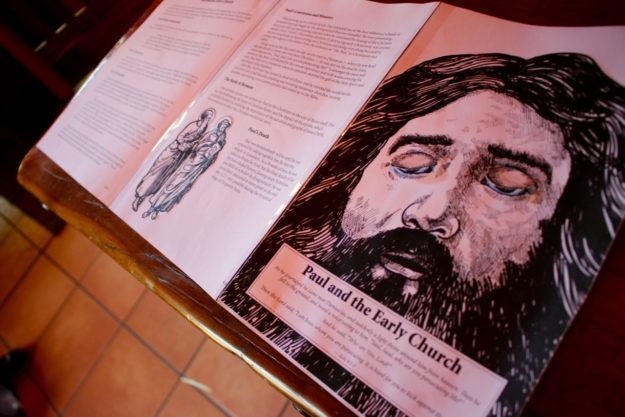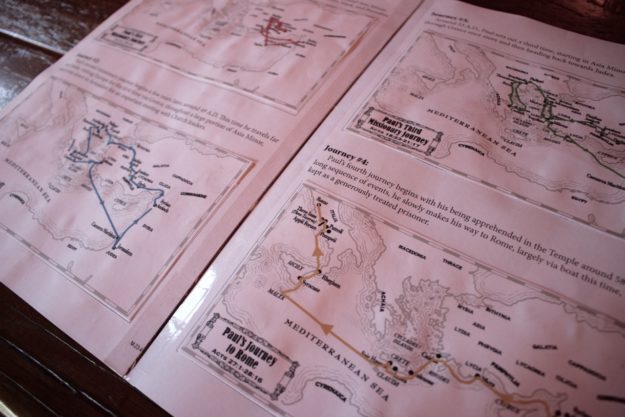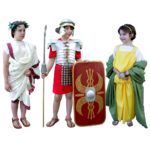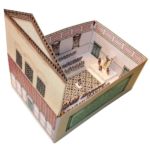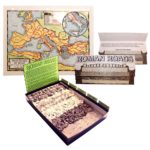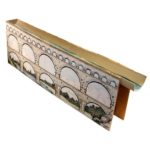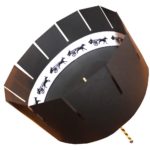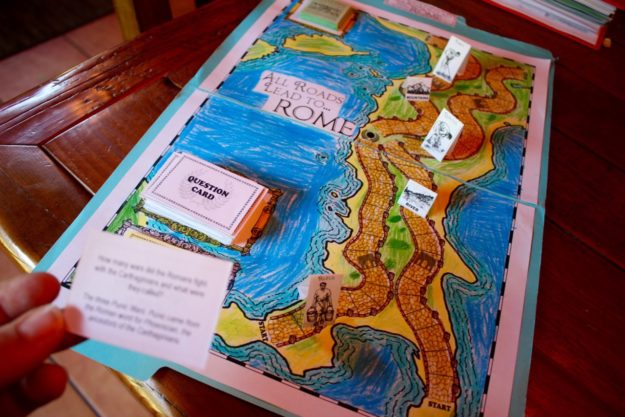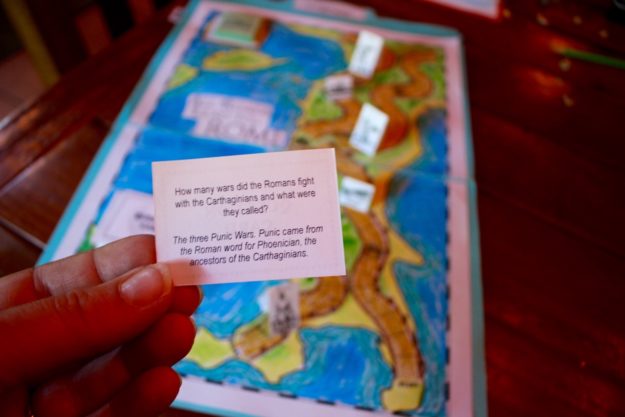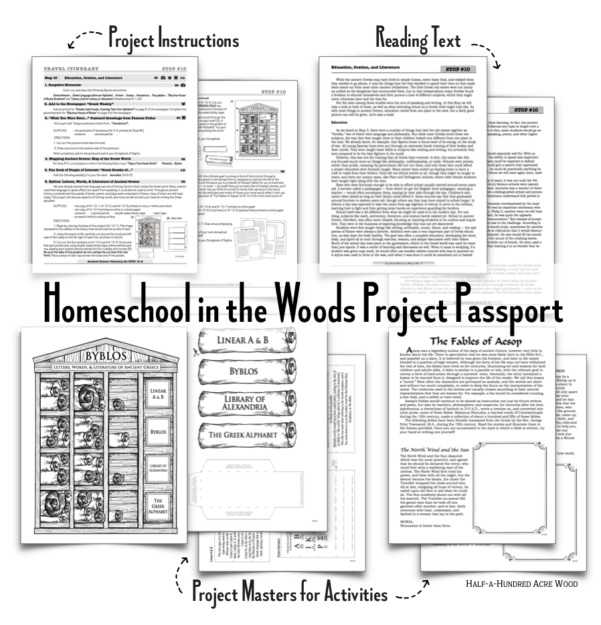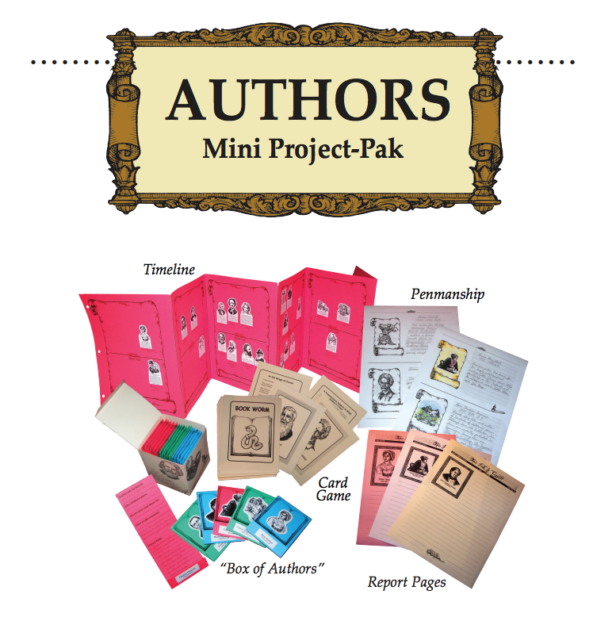As classical learners, our family seeks to study the knowledge, values, and ideals of those cultures which have contributed to Western Civilization: Ancient Greece, Rome, and Israel. If these three cultures are such a part of our heritage – and if we can understand so much more by studying them, why not seize the opportunity to explore them with our children to provide a strong foundation for future study? By introducing our children to the people and places of classical Greece and Rome during these early elementary years, we can establish a firmer foundation of learning that later connects us better to the overarching goals of gleaning wisdom from the words of Homer, Plato, and Cicero in high school. Wouldn’t it be great to already be familiar with some of the people, places, and events to make tackling the great books that much more enjoyable?
Our family has recited history sentences and timeline events for over eight years now. In all our experiences, I’ve found that connecting our memory work with hands-on activities better aids in actually memorizing the content. It makes the information come to life and provides engaging connections for making the memory work more memorable AND enjoyable.
We received this product free for the purpose of reviewing it and were compensated for the time invested in writing this review. We do not recommend anything we don’t use and love in our own homeschool. Affiliate links are used in this post. Please read our full disclosure policy for more details.
And thus with these thoughts… our family embarked on a journey to Ancient Rome this semester to lay some greater foundations in our classical studies using the Ancient Rome Project Passport, an integrated study that provides a glimpse of history (along with Biblical connections!) through reading, handicrafts, projects, and games.
The Ancient Rome Project Passport study includes a chronological history of Rome, starting with the kings and legends of early Rome and its early establishment as city-states to the rise of the Roman Republic and the Roman Empire, eventually leading to its fall to barbarian invasions. Directions and project masters for over 50 projects and activities are included for topics such as: everyday life, government and law, education and occupations, literature and science, medicine and philosophy, religion and warfare, business and transportation, arts and architecture, emperors and oratory, the Pax Romana, barbarian invasions, and the beginnings of Christianity! (Download a sample lesson from the Ancient Rome Project Passport.)
The study includes a Guide Book Text to read about each topic/person/event, along with eight Dramatized Audio Tours that take students on a trip to popular places such as the Forum, the Circus Maximus, or Pompeii, where you visit with such famous folks as Scipio Africanus and Mark Antony. (Click to download the free Dramatized Audio Tour Sample.)
Now let’s take a closer look at some of the highlights, such as the Ancient Rome Timeline, which is always one of our favorite aspects of a Homeschool in the Woods project.
The timeline is one of the most helpful tools for seeing how people, places, and events relate to one another. (We love keeping a timeline!) Along with a timeline, historical maps are another essential part of our study of history:
This map study shows the growth of the Roman Empire over time and the roads that wound throughout the empire.
One of my favorite projects within this study included a card-fan of famous Romans – great for reference throughout our homeschool years!
We compiled memorable notebooking summaries regarding life in Ancient Rome through readings, projects, and notebooking pages featuring Roman living, architecture, and fashion…
…government, emperors, and warfare…
…and religion, math, and more.
Many of the notebooking summaries were gathered into a Lapbook or notebook for safe keeping.
The finished lapbooks are a great way to revisit our history studies in the future – our children love to flip through them and re-read each little tidbit!
With the study of Rome also comes the study of Latin! And it’s amazing to see just a small fraction of the English words that are derived from Latin roots…
Homeschool in the Woods history studies are written from a Christian perspective, so there’s an entire section that focuses on Paul’s ministry and his missionary journeys.
We’ve featured here just a few of the projects we’ve completed thus far, but we’re looking forward to embarking on several more later this semester, including creating costumes, building a diorama of the Senate house, building a Roman road, constructing an aqueduct, forming a zoetrope, and building a model of Mt Vesuvius & Pompeii.
With these studies, there’s always so much to choose from, which means there’s always something for each person in our family to enjoy. And… when we don’t have enough time to complete everything, that’s quite all right! Even though we’ve been juggling this alongside our other studies (and our participation in the Homeschool Dramatic Society), we ended up with a thorough overview of Rome even without completing all the projects! (And now, we’ll have those projects to come back to in the future!)
After we’re finished with this study, we’ll get to enjoy a game of Roman Life (All Roads Lead to Rome File Folder Game) to see how much we remember!
If you’re in Classical Conversations, this study includes multiple tie-ins to Foundations memory work in geography, history, and timeline. It would be a fantastic study to complete over the first six to twelve weeks of the school year! It offers a feast of hands-on projects and activities for studying Ancient Rome, divided into 25 “stops” with reading text and “itineraries” that provide detailed project instructions on how to complete each project or activity. (These studies are only available in digital format; see the example in the image below.)
With the Homeschool in the Woods Ancient Rome Project Passport, there’s no need to find multiple books, maps, or activities about Ancient Rome!
Roman myths? Check!
Roman recipes? Check!
Historical summaries? Check!
Fine arts projects? Check!
Science connections? Check!
Writing assignments? Check!
It’s all included in a single resource, making it easy to dig in deeper to the study of classical Rome! Be sure to visit the product page to download a sample of one of the “stops” from the Project Passport Study along with the dramatized audio.
Although suggested for grades 3 to 8, this hands-on history study includes activities that everyone in our family enjoyed – from preschooler to teen. With the readings, audios, notebooking activities, and projects, each stop can take 1-2 hours to complete, with some activities (e.g., the dioramas) taking additional time for completion. Each stop may be divided into multiple days, which is beneficial for families of young children to keep the lessons short & sweet!
If you don’t have time for the entire program, the following projects are offered separately:
- Ancient Rome Timeline
- All Roads Lead to Rome File Folder Game
- The Roman Tribune Creative Writing Newspaper
If you’re looking for a single hands-on history resource that will provide a reading text, audio dramas, notebooking, projects, art, handicrafts, recipes, timelines, maps, Bible study, and creative writing prompts related to Ancient Rome, we highly recommend the Ancient Rome Project Passport from Homeschool in the Woods!
Free Resources!
Check out this wonderful Famous Authors Study! Homeschool in the Woods has brought back their popular mini-study on authors as a FREE DOWNLOAD for new subscribers! Sign up for their newsletter here!
Are you studying Ancient Rome? Be sure to download the free ebook, Famous Men of Rome!
Homeschool in the Woods provides incredible hands-on, interactive resources to use as you study ancient history this year (Ancient Egypt, Ancient Greece, and Ancient Rome) and as you study the Middle Ages and Renaissance and Reformation next year! Plus, they have great resources for studying chronology and history through the ages, as well as studying the history of astronomy through the Timeline of Science, Invention, and Mathematicians.
Questions? Just hop down to the comments to let us know!
This post was originally published in Summer 2018.

